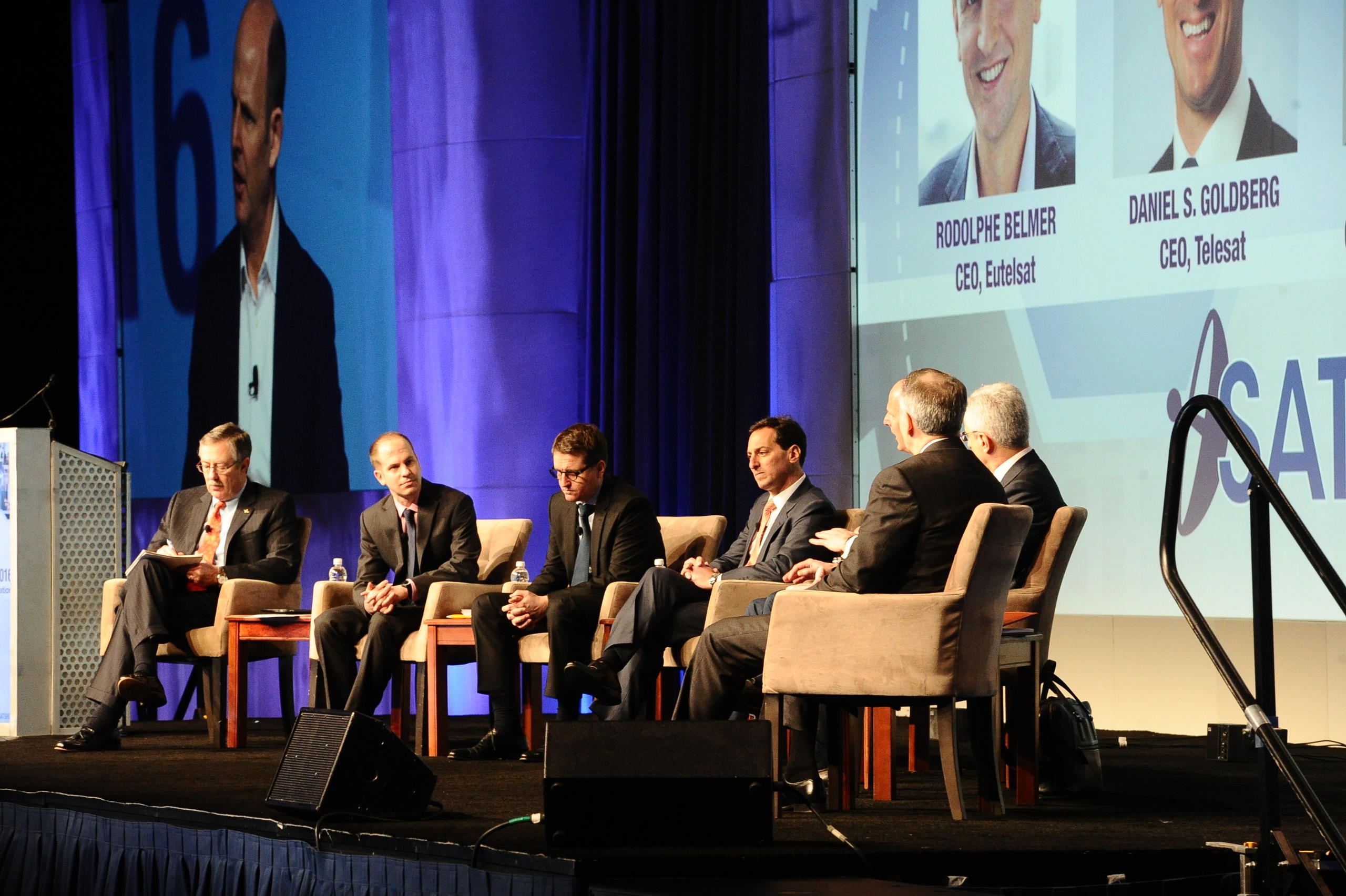
Via Satellite at 30: The First Chapters
Past Via Satellite editors share their experiences and views on the satellite industry for Via Satellite's 30th anniversary edition.July 24th, 2023The explosion of SpaceX’s Falcon 9 booster and payload on September 1, 2016, bookended by an outreach campaign from Arianespace showcasing the reliability of its rocket fleet, reminded me of early 1986 when Via Satellite magazine made its debut. I had joined Satellite News at the beginning of January, having reviewed the business plan for the journal just before Christmas. There was an existing and well-regarded monthly satellite trade magazine already circulating but the marketplace looked ripe for competition, so entrepreneur Tom Phillips funded the Via Satellite idea, founding publisher Bucky Marshall got the go-ahead to proceed, and a new industry resource was born.
Within just a few weeks, our decision to publish appeared shaky. The catastrophic loss of the space shuttle Challenger, with its payload of astronauts, satellites, science, and hope, was followed that spring by failures of the Titan and Delta launch vehicles and the new Ariane 2. Meanwhile, the carrier-centric telecommunications industry, especially in the United States and Europe, was enthralled with cable and fiber, resulting in a “death star” panic among satellite service providers that, along with the interruption in access to space, amounted to a mini-recession for the global satellite marketplace.
But 15-year planning horizons based on 10- and 15-year satellite lifetimes die hard. The industry weathered the storms of competition, niching, and even purported irrelevance. During my years as editor of Via Satellite, many initiatives went forward that reverberate to this day. One irreversible trend was globalization of the business on the earth and space segment manufacturing fronts. The anti-competitive and protectionist hubbub associated with the purchase of Fairchild Industries Inc.’s space and electronics division by France’s Matra SA, and the sale of 49 percent of the civilian side of Ford Aerospace to Aerospatiale, Alcatel, and Selenia Spazio some months later seems almost quaint in retrospect. While the legacy businesses of these firms remain in one form or another, these are names you just don’t hear very often in the 21st century.

Other milestones and events from that era in no particular order include the growth of PanAmSat, the Worldstar and Sirius satellite radio ventures, the birth of EchoStar, the privatization of Intelsat, the initial rise of the LEO constellations — the list goes on. On a more topical level, the growth of the VSAT industry was spurred by microelectronics and other advances that allowed satellite builders to put more and more power in the sky, yielding a commensurate benefit in the reduction in size of satellite dishes on the ground.

One could say that the many technologies enabling the advent of ever-smaller receiving dishes post direct ancestral lines to the personal satellite services of today. I remember with a chuckle the government/military handwringing precipitated by commercial proposals to make satellite imagery with 3-meter resolution available to all buyers. As communications via satellite become more commonplace and lost some of its “wow” factor, the global marketplace settled into its corner of the larger global telecommunications marketplace, coexisting with competitors that just a few years before had been sounding the death knell for space-based communications. As it turned out, the satellite community didn’t cannibalize itself out of existence, the emergence of “international satellite systems separate from Intelsat” did not destroy the international regulatory/treaty network governing space communications, and some sort of use ultimately was found for nearly every satellite put into orbit, regardless of the original intent or the sometimes grandiose visions of well-heeled financiers.
The saga of Satellite Business Systems is one story that reached the end of its corporate identity during my time as editor of Via Satellite and my subsequent years as chairman of our annual SATELLITE Conference and Exhibition. Suffice it to say, perhaps simplistically, that the technology had not arrived to support the service that was being sold, but sold it was! SBS marked the commercial introduction of Ku-band and thus earns an exhibit case in the museum of satellite communications.
I cut my teeth on the Space Age — my fifth birthday coincided with the launch of the United States’ first successful satellite, Explorer I. I sat glued to the TV for NASA’s Gemini and Apollo missions and thrilled to the words “Live via Satellite” whenever they appeared. Happy as a clam working at The Washington Post, I couldn’t say no when the public relations director at Communications Satellite Corporation offered me a job in his office in 1981. The lure of space was and remains strong for me.
And when the chance came to return to journalism and work with the Satellite Group at Phillips Business Information, Inc., I had to say yes. Three decades later, it remains an honor to be associated with the ongoing success of Via Satellite and the Satellite Group at Access Intelligence LLC and to participate in the relentless growth of the global satellite-enabled marketplace. VS
